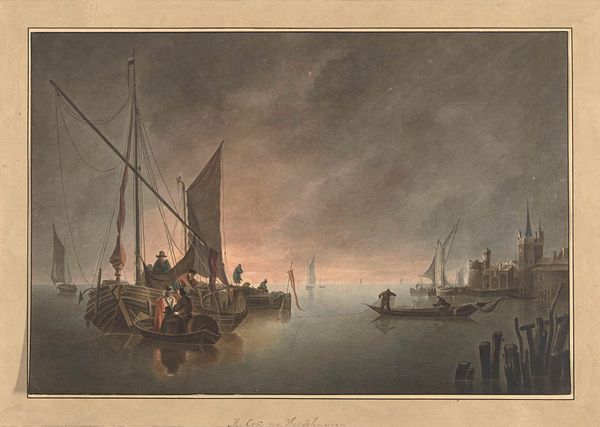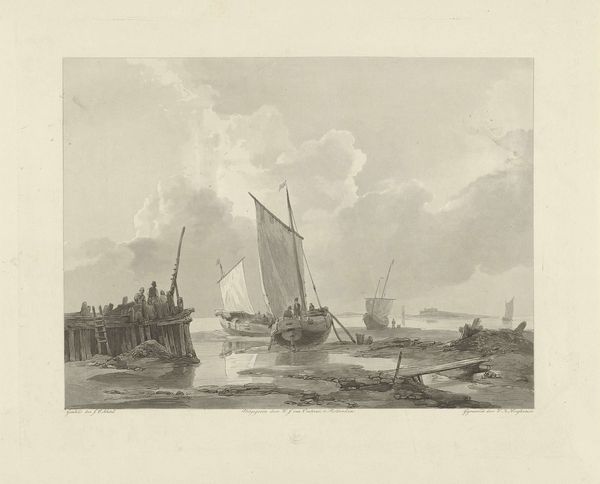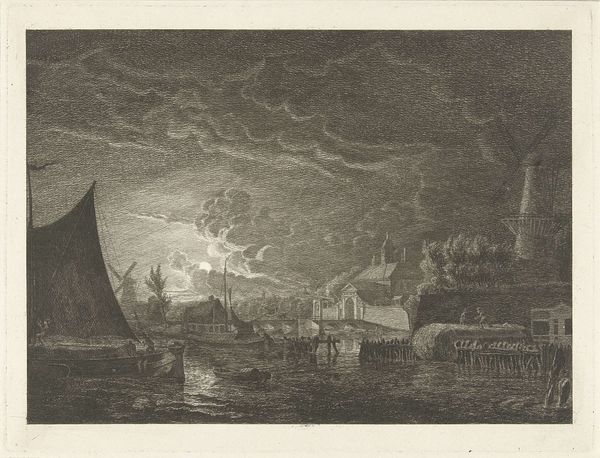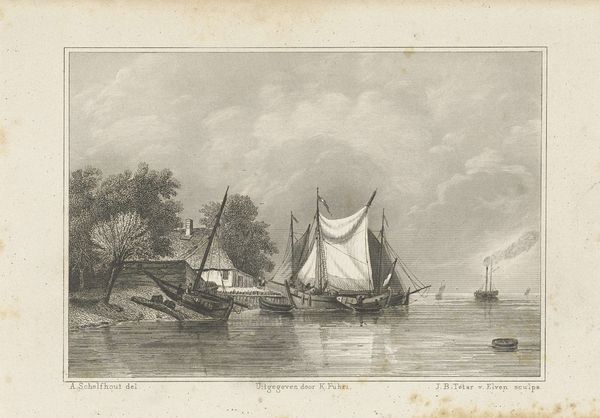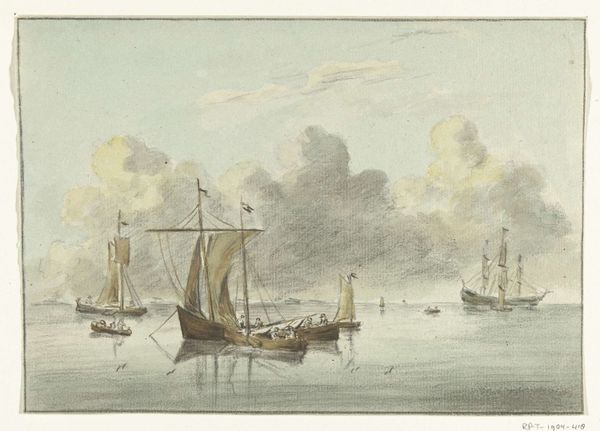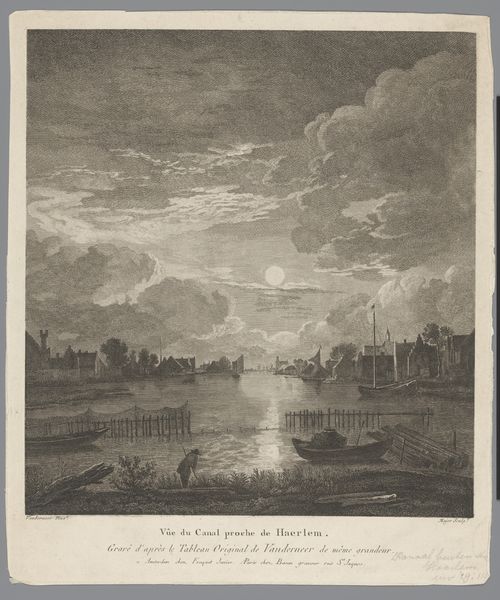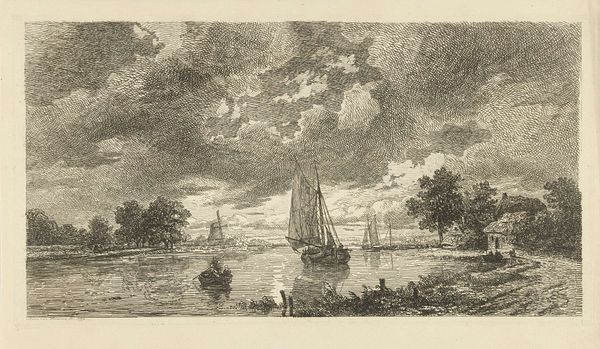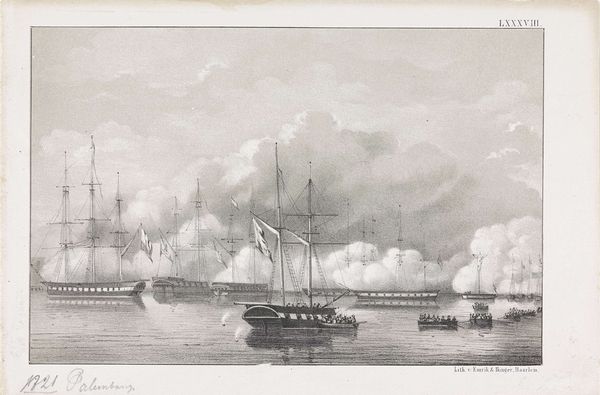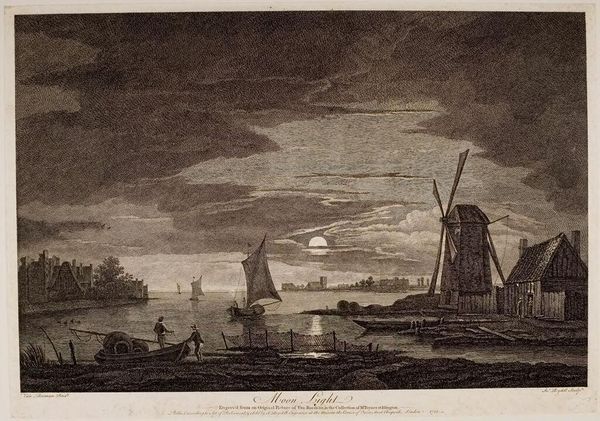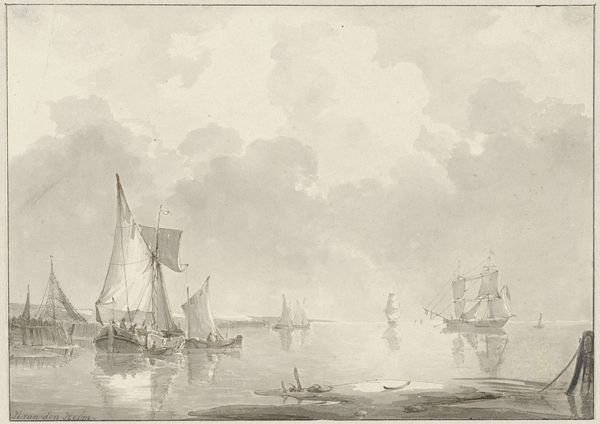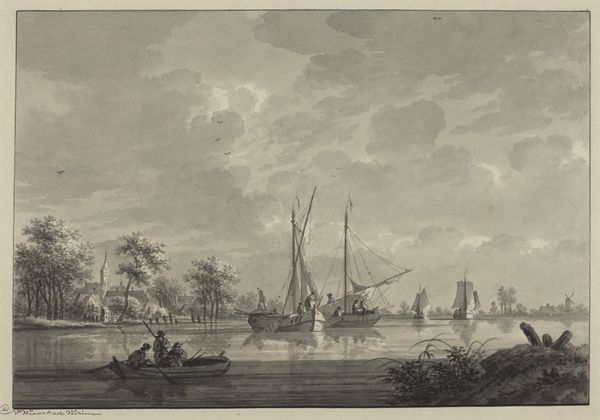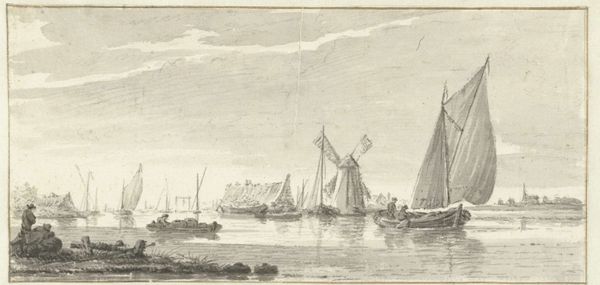
Dimensions: height mm, width mm
Copyright: Rijks Museum: Open Domain
Johann Wilhelm Kaiser created this night river scene as an etching, a printmaking technique involving biting lines into a metal plate with acid, around the mid-19th century. The character of the etched line gives the image its particular feel. Note how the sky is rendered: Kaiser created texture through tiny hatches, made by repeatedly drawing through a prepared ground and then immersing the plate in acid. This painstaking work would have required immense patience and skill. The tonal range achieved is remarkable, especially considering the limitations of a monochrome palette. Kaiser wasn't just making an image, he was demonstrating a mastery of a difficult reproductive technique. Etching has a long history, stretching back to the workshops of armourers, who used acid to decorate metal. By Kaiser's time, it was widely used for reproduction, feeding the growing demand for images in a rapidly industrializing world. Looking closely at the artwork, we can see that the labor and technical skill involved are crucial to its meaning, embodying the values of craft and careful observation at a time of great social change.
Comments
No comments
Be the first to comment and join the conversation on the ultimate creative platform.
